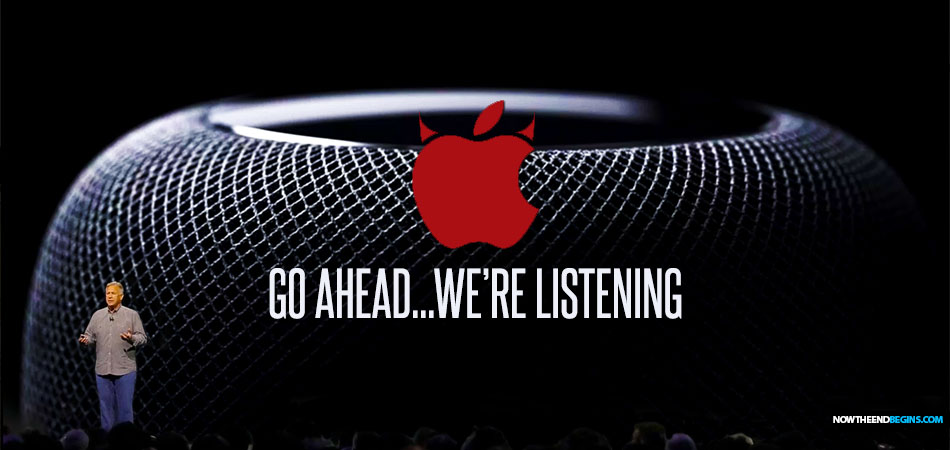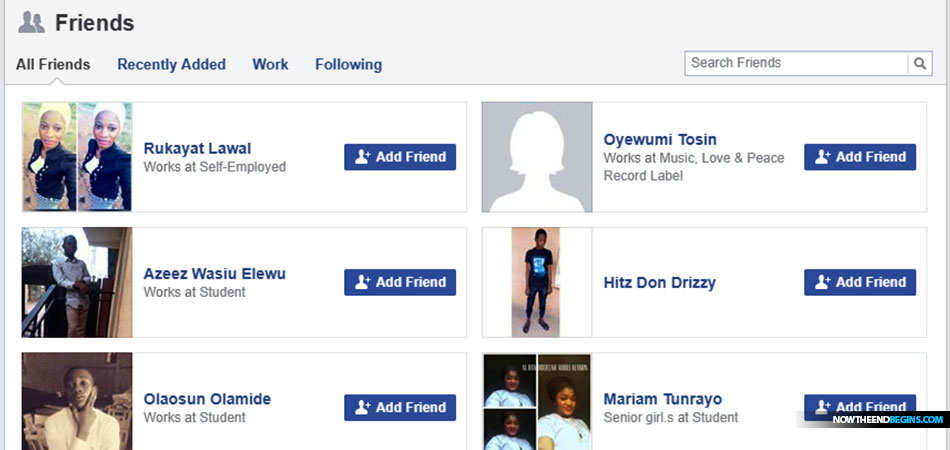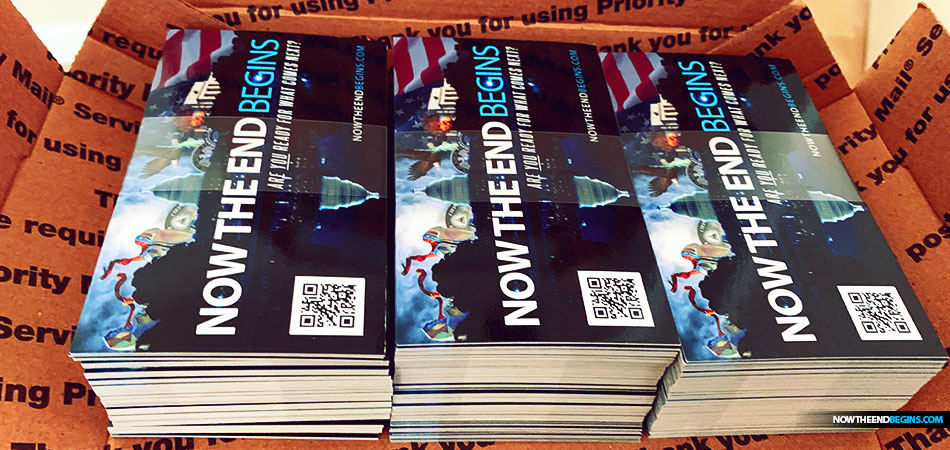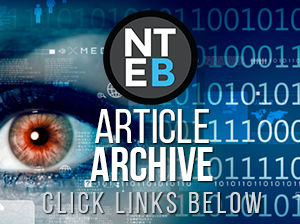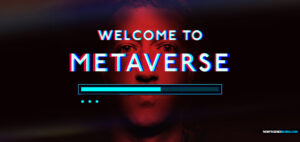Hackers
AT RISK: You Must Delete Apple’s QuickTime Software From Your Windows PC
Exploitation of QuickTime for Windows vulnerabilities could allow remote attackers to take control of affected systems.

When Apple announced that it would discontinue security updates for QuickTime for Windows, it set of a chain reaction that culminated in a warning from the U.S. Department of Homeland Security to remove the program. Now Adobe joins the masses scrambling for a solution.
EDITOR’S NOTE: If you use a Windows PC, any version on any age computer, please go into your CONTROL PANEL – PROGRAMS AND FEATURES and delete Apple’s QuickTime for Windows immediately from your system. Your system is wide open to attack. Also, if you are a web developer like we are, delete Adobe Flash from your system as well.
Apple told cybersecurity firm Trend Micro that it is “deprecating” QuickTime for Windows. They will no longer produce security updates, despite two security holes that are so dire they could allow an attacker to actually take control of a Windows PC with the video player installed.
First, Apple is deprecating QuickTime for Microsoft Windows. They will no longer be issuing security updates for the product on the Windows Platform and recommend users uninstall it. Note that this does not apply to QuickTime on Mac OSX.
Second, our Zero Day Initiative has just released two advisories ZDI-16-241 and ZDI-16-242 detailing two new, critical vulnerabilities affecting QuickTime for Windows. These advisories are being released in accordance with the Zero Day Initiative’s Disclosure Policy for when a vendor does not issue a security patch for a disclosed vulnerability. And because Apple is no longer providing security updates for QuickTime on Windows, these vulnerabilities are never going to be patched. [emphasis added]
Trend Micro’s “Zero Day” policy prompted them to issue this “urgent call to action” on their blog, imploring all QuickTime for Windows users to uninstall the software immediately. The risk is so great that the U.S. government joined its voice with Trend Micro, issuing their own alert through the United States Computer Emergency Readiness Team:
Computer systems running unsupported software are exposed to elevated cybersecurity dangers, such as increased risks of malicious attacks or electronic data loss. Exploitation of QuickTime for Windows vulnerabilities could allow remote attackers to take control of affected systems. [emphasis added]
As US-CERT reminds us, all software has a life span. It’s the sudden cut-and-run nature of Apple’s transformation of their Windows QuickTime platform that has created such a furor, and with good reason. Most people may not even realize that they have QuickTime installed, and will need to check their Program Manager to ensure it’s removed.
Homeland Security wants you to wipe out Apple’s Quicktime software:
Meanwhile, Adobe has begun a furious scramble to extricate itself from dependencies on the QuickTime video codecs in its “professional video, audio and digital imaging applications and native decoding of many .mov formats is available today.”
In a brief message to Adobe product users from Madison Murphy on behalf of its Customer Care Team, the company suggested limited workarounds for processes that “unfortunately” rely on the abandoned format. In the meantime, they have worked “extensively” to remove those dependencies altogether. According to the post, this is all part of the plan.
Adobe’s desire has always been to support everything natively without the need for QuickTime. As a result of the above we intend to increase our efforts to remove these incompatibilities, and provide our customers with a complete native pipeline. We will provide more information on this as we progress.
Graphics.com’s Chris Dickman isn’t buying any of it. The founding editor has provided his own translation of Adobe’s message, and it’s a bit less flattering:
Unfortunately? Let me paraphrase that for you: “We didn’t see this coming, your systems are compromised if you keep using our software and we will make no committment to fixing this.”
Sweet. Of course, Windows users are just expected to suck that up. Although all hell would have broken loose if Adobe’s Mac-based video community had been put at similar risk.
He also brought up Adobe’s recent security gaffe regarding vulnerabilities that may have compromised users in its “Creative Cloud,” comparing Adobe’s widely-used “Flash” video player to a “malignant organism” and advises that if you have it, you should “kill it now.”
While Apple and Adobe focus on covering their exposed digital posteriors, users remain the ones left in the cold. And while Trend Micro has yet to find any instances of these critical vulnerabilities being exploited in the wild, it’s only a matter of time for motivated virtual attackers. source

This Is What A Fake Facebook Profile Looks Like And How You Can Protect Yourself From Hackers And Government Snoopers
Facebook has over 2 billion profiles, but many of them are nothing more than third-world hackers and government snoopers who want to be fake friends with you.

Facebook has over 2 billion profiles, but many of them are nothing more than third-world hackers and government snoopers who want to be fake friends with you
Meet Mary Lambert, she lives in North Carolina. Mary just sent me a friend request, and wants to connect with me on Facebook. I get dozens of requests from such people, mostly women, who have profiles that look just like Mary’s profile. I always click the DELETE REQUEST button, and then immediately click the MARK AS SPAM button, and Mary Lambert joins the others who have the same kind of profile.
You see, Mary Lambert is not a real person, at least not in the profile I see in front of me. Mary’s profile is filled with red flags which identify it as coming from either hackers seeking access to my information, or from surveillance groups like the NSA or the FBI looking to monitor people.
Somehow, this pathetically easy-to-identify as fake profile is able to escape Facebook’s much-touted security algorithms and make its way into my inbox. Obviously, Facebook is not making an serious attempt to prevent fake profiles. So let me give you a quick lesson in how to stop a phony profile on Facebook or any other social media platform.
- INCOMPLETE OR NON-MATCHING INFORMATION: Mary Lambert’s profile says that she is a student and lives in North Carolina. But the school she says she attends is not a school at all but something called the North Carolina High School Athletic Association. Additionally, she says that she went there from “May 2, 2016 to Apr 6, 2020”. How is it possible to know your graduation date when it is yet 2 years in the future? This leads me to believe that the page was created by a bot.
- MARY’S FRIENDS ARE ALL FROM FOREIGN COUNTRIES: Yes, I know that Facebook is a global site and that you can have friends from all over the world. I have Facebook friends from Israel, South Africa, Brazil, New Zealand and many other countries. But I have verified that these are real people. The majority of Mary’s friends seem to be black muslims from muslim-dominated nations like Tanzania. She appears to have exactly zero friends from North Carolina. Mary and I have no friends in common, which leads to me to wonder why she would want to be friends with me in the first place.
- FUNKY PHOTOS: Mary only has two photos showing, and one of them is a selfie in the bathroom. Real people probably would not choose to have this be the their main photo to represent them.
FROM NBC NEWS: The Feds are on Facebook. And MySpace, LinkedIn and Twitter, too. U.S. law enforcement agents are following the rest of the Internet world into popular social-networking services, going undercover with false online profiles to communicate with suspects and gather private information, according to an internal Justice Department document that offers a tantalizing glimpse of issues related to privacy and crime-fighting. Think you know who’s behind that “friend” request? Think again. Your new “friend” just might be the FBI. The document, obtained in a Freedom of Information Act lawsuit, makes clear that U.S. agents are already logging on surreptitiously to exchange messages with suspects, identify a target’s friends or relatives and browse private information such as postings, personal photographs and video clips. READ MORE
The next time you receive a friend request on Facebook, take a moment to review their information in the ABOUT section. Pay a visit to their FRIENDS list, and see how many friends you have in common. Look in the MORE section and see what their interests are. Mary Lambert had exactly no listings of any kind in a section that should have been highly populated with her personal likes and dislikes.
That’s because Mary Lambert is not a real person.
***************************
Now The End Begins is your front line defense against the rising tide of darkness in the last days before the rapture of the church
HOW TO DONATE: Click here to view our GoFundMe page
When you contribute to this fundraising effort, you are helping us to do what the Lord called us to do. The money you send in goes primarily to the building of the recording studio, but it also goes to the overall daily operations of this site. When people ask for Bibles, we send them out at no charge. When people write in and say how much they would like gospel tracts but cannot afford them, we send them a box at no cost to them for either the tracts or the shipping, no matter where they are in the world. Even all the way to South Africa. We even restarted our weekly radio Bible study on Sunday nights again, thanks to your generous donations.
But whatever you do, don’t do nothing. Time is short and we need your help right now. If every one of the 12,621 people on our daily mailing list gave $4.50, we would reach our goal immediately. If every one of our 151,781 followers on Facebook gave $1.00 each, we would reach 300% of our goal. The same goes for our 13,600 followers on Twitter. But sadly, many will not give, so we need the ones who can and who will give to be generous. As generous as possible.
“Looking for that blessed hope, and the glorious appearing of the great God and our Saviour Jesus Christ;” Titus 2:13 (KJV)
“Thank you very much!” – Geoffrey, editor-in-chief, NTEB
HOW TO DONATE: Click here to view our GoFundMe page
CIA
TRUMPED: WikiLeaks To Open ‘Vault 7’ Today Revealing Confidential Information On CIA Hacking
Code-named ‘Vault 7’ by WikiLeaks, it is the largest ever publication of confidential documents on the Central Intelligence Agency.

Today, Tuesday 7 March 2017, WikiLeaks begins its new series of leaks on the U.S. Central Intelligence Agency. Code-named “Vault 7” by WikiLeaks, it is the largest ever publication of confidential documents on the agency.
EDITOR’S NOTE: President Trump says he was spied on at Trump Tower the order of Barack Obama, a claim which the Obama Shadow Government denies. Far Left Democrats say Russians hacked the election in collusion with Trump, a claim which the Trump administration denies. He said, she said, right? Maybe not. Today, WikiLeaks announced they are opening ‘Vault 7 ‘ showing leaked emails exposing CIA hacking. Looks like we are about to get some definitive answers.
The first full part of the series, “Year Zero”, comprises 8,761 documents and files from an isolated, high-security network situated inside the CIA’s Center for Cyber Intelligence in Langley, Virgina. It follows an introductory disclosure last month of CIA targeting French political parties and candidates in the lead up to the 2012 presidential election.
Recently, the CIA lost control of the majority of its hacking arsenal including malware, viruses, trojans, weaponized “zero day” exploits, malware remote control systems and associated documentation. This extraordinary collection, which amounts to more than several hundred million lines of code, gives its possessor the entire hacking capacity of the CIA. The archive appears to have been circulated among former U.S. government hackers and contractors in an unauthorized manner, one of whom has provided WikiLeaks with portions of the archive.
Wikileaks Vault 7 & The 5 W’s Explained:
“Year Zero” introduces the scope and direction of the CIA’s global covert hacking program, its malware arsenal and dozens of “zero day” weaponized exploits against a wide range of U.S. and European company products, include Apple’s iPhone, Google’s Android and Microsoft’s Windows and even Samsung TVs, which are turned into covert microphones.
Since 2001 the CIA has gained political and budgetary preeminence over the U.S. National Security Agency (NSA). The CIA found itself building not just its now infamous drone fleet, but a very different type of covert, globe-spanning force — its own substantial fleet of hackers. The agency’s hacking division freed it from having to disclose its often controversial operations to the NSA (its primary bureaucratic rival) in order to draw on the NSA’s hacking capacities.
By the end of 2016, the CIA’s hacking division, which formally falls under the agency’s Center for Cyber Intelligence (CCI), had over 5000 registered users and had produced more than a thousand hacking systems, trojans, viruses, and other “weaponized” malware. Such is the scale of the CIA’s undertaking that by 2016, its hackers had utilized more code than that used to run Facebook. The CIA had created, in effect, its “own NSA” with even less accountability and without publicly answering the question as to whether such a massive budgetary spend on duplicating the capacities of a rival agency could be justified.
In a statement to WikiLeaks the source details policy questions that they say urgently need to be debated in public, including whether the CIA’s hacking capabilities exceed its mandated powers and the problem of public oversight of the agency. The source wishes to initiate a public debate about the security, creation, use, proliferation and democratic control of cyberweapons.
Once a single cyber ‘weapon’ is ‘loose’ it can spread around the world in seconds, to be used by rival states, cyber mafia and teenage hackers alike.
Julian Assange, WikiLeaks editor stated that “There is an extreme proliferation risk in the development of cyber ‘weapons’. Comparisons can be drawn between the uncontrolled proliferation of such ‘weapons’, which results from the inability to contain them combined with their high market value, and the global arms trade. But the significance of “Year Zero” goes well beyond the choice between cyberwar and cyberpeace. The disclosure is also exceptional from a political, legal and forensic perspective.”
Wikileaks has carefully reviewed the “Year Zero” disclosure and published substantive CIA documentation while avoiding the distribution of ‘armed’ cyberweapons until a consensus emerges on the technical and political nature of the CIA’s program and how such ‘weapons’ should analyzed, disarmed and published.
Wikileaks has also decided to redact and anonymise some identifying information in “Year Zero” for in depth analysis. These redactions include ten of thousands of CIA targets and attack machines throughout Latin America, Europe and the United States. While we are aware of the imperfect results of any approach chosen, we remain committed to our publishing model and note that the quantity of published pages in “Vault 7” part one (“Year Zero”) already eclipses the total number of pages published over the first three years of the Edward Snowden NSA leaks. source
End Times
WAITING FOR THE MARK: Digital Implants Are Becoming Big Business As Biohacker Groups Grow
Tim Shank, the president of the Minneapolis futurist group TwinCities+, has a digital implant installed in his hand that can communicate electronically with his front door and tell it to unlock itself.
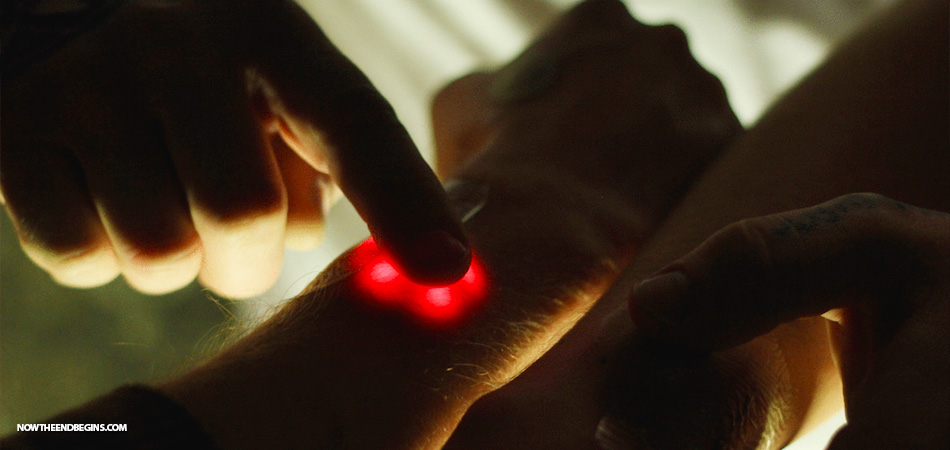
Tim Shank can guarantee he’ll never leave home without his keys. Why? His house keys are located inside his body.
“And he causeth all, both small and great, rich and poor, free and bond, to receive a mark in their right hand, or in their foreheads: And that no man might buy or sell, save he that had the mark, or the name of the beast, or the number of his name.” Revelation 13:16,17 (KJV)
EDITOR’S NOTE: When NTEB started in 2009, a story like this would set the Internet on fire, and people would post passionate warnings against taking the Mark of the Beast when it arrived. But Christians have grown cold, become complacent, and a story like this won’t even won’t even get a mild viral buzz. It won’t be the Mark of the Beast until Antichrist shows up, but by that point, his Mark will just be the latest in a long line of implants that people will have become accustomed to receiving.
Tim Shank, the president of the Minneapolis futurist group TwinCities+, has a microchip installed in his hand that can communicate electronically with his front door and tell it to unlock itself. His wife has one, too.
“You have mental checklists as you’re coming and going out of your home,” Shank says. “One of those things is my wallet, keys, all those things I have with me. Once you start to eliminate all those things, you start to see all the mind space it actually clears not to have to worry about them.”
Experimenting with Biochip Implants:
This video shows the amazing progress being made by the biohacking community in merging the human body with digital microchips. The age of the cyborg has arrived, with no end in sight for how far it will and can go.
In fact, Shank has several chips in his hand, including a near field communication (NFC) chip like the ones used in Apple Pay and similar systems, which stores a virtual business card with contact information for TwinCities+. “For people with Android phones, I can just tap their phone with my hand, right over the chip, and it will send that information to their phone,” he says. In the past, he’s also used a chip to store a bitcoin wallet.
Shank is one of a growing number of “biohackers” who implant hardware ranging from microchips to magnets inside their bodies.
Some biohackers use their implants in experimental art projects. Others who have disabilities or medical conditions use them to improve their quality of life, while still others use the chips to extend the limits of human perception. Shank, for instance, has experimented with a portable distance sensor that vibrates a magnet in his hand; it’s like a sonar system that lets him sense how far away obstacles are. He also considered installing a chip that would track his body temperature. But not every use case is so ambitious—for some, the chips are merely convenient ways to store data and unlock doors.
Experts sometimes caution that the long-term health risks of the practice are still unknown. But many biohackers claim that, if done right, implants can be no more dangerous than getting a piercing or tattoo. In fact, professional body piercers are frequently the ones tasked with installing these implants, given that they possess the training and sterilization equipment necessary to break people’s skin safely.
“When you talk about things like risk, things like putting it in your body, the reality is the risk of having one of these installed is extremely low—it’s even lower than an ear piercing,” says Amal Graafstra, the founder of Dangerous Things, a biohacking supply company.
Graafstra, who is also the author of the book RFID Toys, says he first had an RFID chip installed in his hand in 2005, which allowed him to unlock doors without a key. When the maker movement took off a few years later, and as more hackers began to explore what they could put inside their bodies, he founded Dangerous Things with the aim of ensuring these procedures were done safely.
“I decided maybe it’s time to wrap a business model around this and make sure that the things people are trying to put in their bodies are safe,” he says. The company works with a network of trained body piercers and offers online manuals and videos for piercers looking to get up to speed on the biohacking movement.
At present, these chips are capable of verifying users’ identities and opening doors. And according to Graafstra, a next-generation chip will have enough on-board cryptographic power to potentially work with credit card terminals securely.
“The technology is there—we can definitely talk to payment terminals with it—but we don’t have the agreements in place with banks [and companies like] MasterCard to make that happen,” he says.
Paying for goods with an implantable chip might sound unusual for consumers and risky for banks, but Graafstra thinks the practice will one day become commonplace. He points to a survey released by Visa last year that found that 25% of Australians are “at least slightly interested” in paying for purchases through a chip implanted in their bodies.
“It’s on the minds of people,” he says. “It just needs to be brought to fruition.”
Other implantable technology has more of an aesthetic focus: Pittsburgh biohacking company Grindhouse Wetware offers a below-the-skin, star-shaped array of LED lights called Northstar. While the product was inspired by the on-board lamps of a device called Circadia that Grindhouse founder Tim Cannon implanted to send his body temperature to a smartphone, the commercially available Northstar features only the lights and is designed to resemble natural bioluminescence.
“This particular device is mainly aesthetic,” says Grindhouse spokesman Ryan O’Shea. “It can backlight tattoos or be used in any kind of interpretive dance, or artists can use it in various ways.”
The lights activate in the presence of a magnetic field—one that is often provided by magnets already implanted in the same user’s fingertips. Which brings up another increasingly common piece of bio-hardware: magnetic finger implants. Hackers say these small magnets allow users to sense the presence of electromagnetic fields, to diagnose electrical problems like faulty wiring, and even to pull small metal objects like paper clips and bottle caps toward you, making you into something of a low-rent Magneto. Despite the power of these implants, they’re fortunately not strong enough to trip metal detectors, wipe hard drives, or interfere with MRI scans.
“Most Northstar clients already have the magnets,” says Zack Watson, a piercer who installs implants for Grindhouse. “The magnets are kind of like a baby step into the heavy mod community. It’s not so much visible as it is modifying the body to get that magnetic vision, and then the byproduct is that you’re able to activate the implant.”
According to O’Shea, a second-generation Northstar will include a Bluetooth transmitter and gesture-recognition sensors, which will let it communicate with a smartphone to control Internet of Things-type technology. That’s not the only reason many early adopters may eventually choose to upgrade their implants. Another has to do with the limited battery life.
“The device will die, much like a pacemaker will die,” he says. “When a pacemaker does die, it is removed in a procedure and is completely replaced with a new unit. That is similar to what will happen with Northstar.”
Luckily for users, the Northstar can be inserted or replaced in about 15 minutes by a skilled piercer, says O’Shea.
“It’s just a small incision, usually in the side of the hand,” he adds. “The skin is separated from the hand there, and the device is just inserted, and the skin is stitched up.”
As long as they’re inserted properly, the implants leave minimal scarring, says Watson. He has magnets in his hand that let him do “little parlor tricks” and pick up needles while he works. “My kids are convinced I have a magic finger,” he says. Meanwhile, an RFID chip in his hand lets him unlock his phone and automatically load his Instagram portfolio for potential customers to see.
“My phone has a reader in it, and you’re able to use that reader to scan my hand,” Watson says. “It’s a cool way to show off your work.” source
ADDENDUM: The Bible clearly teaches that the Church of Jesus Christ will be REMOVED from this earth in the Rapture just before the start of the time of Jacob’s trouble. The Bible is equally clear that for those living during the Great Tribulation, that God offers NO forgiveness for anyone who takes the Mark of the Beast.
“And I saw thrones, and they sat upon them, and judgment was given unto them: and I saw the souls of them that were beheaded for the witness of Jesus, and for the word of God, and which had not worshipped the beast, neither his image, neither had received his mark upon their foreheads, or in their hands; and they lived and reigned with Christ a thousand years.” Revelation 20:4 (KJV)
Now The End Begins is your front line defense against the rising tide of darkness in the last Days before the Rapture of the Church
- HOW TO DONATE: Click here to view our WayGiver Funding page
When you contribute to this fundraising effort, you are helping us to do what the Lord called us to do. The money you send in goes primarily to the overall daily operations of this site. When people ask for Bibles, we send them out at no charge. When people write in and say how much they would like gospel tracts but cannot afford them, we send them a box at no cost to them for either the tracts or the shipping, no matter where they are in the world. Even all the way to South Africa. We even restarted our weekly radio Bible study on Sunday nights again, thanks to your generous donations. All this is possible because YOU pray for us, YOU support us, and YOU give so we can continue growing.
But whatever you do, don’t do nothing. Time is short and we need your help right now. If every one of the 15,860+ people on our daily mailing list gave $4.50, we would reach our goal immediately. If every one of our 150,000+ followers on Facebook gave $1.00 each, we would reach 300% of our goal. The same goes for our 15,900 followers on Twitter. But sadly, many will not give, so we need the ones who can and who will give to be generous. As generous as possible.
“Looking for that blessed hope, and the glorious appearing of the great God and our Saviour Jesus Christ;” Titus 2:13 (KJV)
“Thank you very much!” – Geoffrey, editor-in-chief, NTEB
- HOW TO DONATE: Click here to view our WayGiver Funding page
-

 George Soros7 years ago
George Soros7 years agoProof Of George Soros Nazi Past Finally Comes To Light With Discovery Of Forgotten Interview
-

 Election 20167 years ago
Election 20167 years agoDEAD POOL DIVA: Huma Abedin Kept Those Hillary Emails That The FBI Found In A Folder Marked ‘Life Insurance’
-

 Election 20167 years ago
Election 20167 years agoCrooked Hillary Campaign Used A Green Screen At Today’s Low Turnout Rally In Coconut Creek FL
-

 George Soros7 years ago
George Soros7 years agoSORE LOSER: George Soros Declares War On America As Violent MoveOn.Org Protests Fill The Streets
-

 Donald Trump7 years ago
Donald Trump7 years agoDonald Trump Will Be 70 Years, 7 Months And 7 Days Old On First Full Day In Office As President
-

 Headline News7 years ago
Headline News7 years agoIf Hillary Is Not Guilty, Then Why Are Her Supporters Asking Obama To Pardon Her? Hmm…
-

 Election 20168 years ago
Election 20168 years agoWikiLeaks Shows George Soros Controlling Vote With 16 States Using SmartMatic Voting Machines
-

 End Times7 years ago
End Times7 years agoFalse Teacher Beth Moore Endorses The Late Term Partial-Birth Abortion Candidate Crooked Hillary








